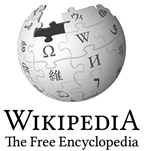
Background and Rationale
Child Sexual Abuse
Child sexual abuse (CSA) is significant not only as a violation of children’s rights and the personal integrity of girls and boys, but also because it has been shown to enhance risk for HIV infection and other adverse outcomes. The main factors which have been put forward as
contributing to the spread of HIV infection among women and girls in the Caribbean are:
1) poverty, particularly within female headed households;
2) early onset of sexual activity, which often is associated with gender socialization practices, and crimes of child abuse predominantly against the girl child; and
3) transactional sex and/or inter-generational sex where girls enter into risky sexual activity with older men often linked to poverty and peer pressure (ECLAC/LC/CAR/L.58, 2005).
Furthermore, the social context for rape and other forms of sexual abuse against young women and girls in the Caribbean involves several interconnecting factors such as: gender inequality; social norms based on patriarchal values; domestic violence, the economic dependence of many women on men and, the status of children.
While there is the problem of under-reporting, there is no doubt that CSA is a significant
problem in Trinidad and Tobago. In a six-month period in 2006, some 165 cases of CSA were
reported to the police, of which 85% related to violations of girls (16% were cases of incest).
Despite the extent of the problem, there is very little sustained advocacy around the issue to
which young girls are particularly vulnerable. To some extent this is a consequence of limited
understanding on prevalence and impact, as this form of sexual violation remains taboo and
therefore hidden.
Child sexual abuse has been known to originate in several spaces including the home, homes
of relatives and family friends, schools, religious institutions and community locations. This
project focuses primarily on CSA in the home, which may be carried out by relatives, primarily
male relatives – fathers, stepfathers, older brothers, cousins etc. Commonly referred to as
incest, preliminary explorations using newspaper sources, information from schools, social
workers and other research suggest that this comprises a significant component of CSA in
Trinidad and Tobago and the region. This project, therefore, aims to focus on child sexual
abuse with a special emphasis on incest and its impact on HIV infection.
While there have been positive developments in addressing both sexual violence and HIV
and AIDS in the Caribbean, these actions remain largely disconnected, both conceptually and
programmatically. Little if any cross-referencing exists between the end violence against
women movements (driven by women’s rights activism) and HIV and AIDS policy makers and
service providers. In spite of the scaling up of access to HIV preventative strategies, care,
treatment and support mechanisms for Persons Living with HIV, the linkages between HIV
transmission and sexual abuse have not yet been made. This project presents an opportunity
to bridge the divide in responses to sexual violence, child sexual abuse and HIV and AIDS.
Summary of Phase I, II & III
From January 2008 to April 2011, UNICEF and UN Trust Fund assisted IGDS in implementing activities of this action-research project that aims to reduce the prevalence of child sexual abuse (CSA)/incest and its implications for HIV throughout Trinidad and Tobago. The need to create such a Project stemmed from Stakeholders Meetings held in Trinidad and Tobago in November 2004 aimed at identifying issues related to gender, sexuality and HIV/AIDS. CSA, as well as the linkages between CSA/incest and HIV, was identified as a prevalent phenomenon, which had received little critical academic examination. Understanding CSA/incest and its implications for HIV is important for a number of reasons:
* Increased data on CSA/incest prevalence and implications for HIV can be used to increase
societal awareness and decrease taboo on the two issues;
* Information on associated factors can be used for the development of effective CSA/
incest education and prevention programmes and policies, which will allow for early
identification and timely interventions to reduce the associated physical and
psychological trauma and subsequent psychopathology, including risky sexual
behaviours;
* By decreasing the incidence and prevalence of CSA/incest through culturally appropriate
programmes, the immediate risk of HIV exposure among survivors will also be reduced
(For more information see: Appendix A: Links Between Sexual Abuse and Exploitation, and
HIV Transmission.
![]()


















